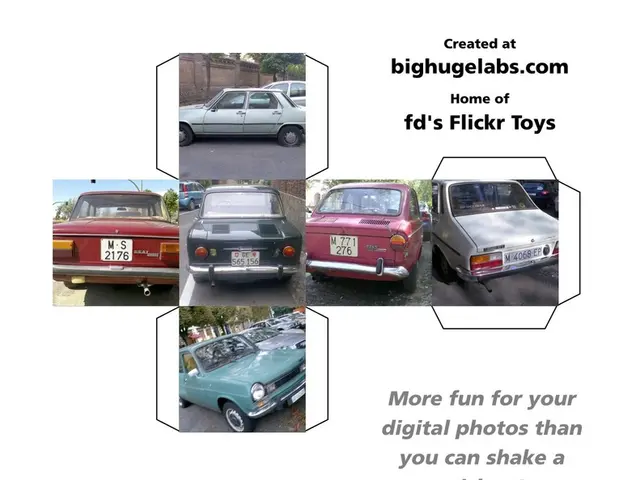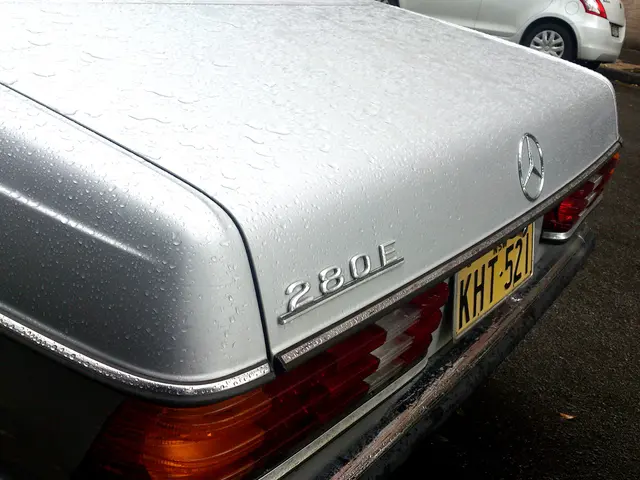Struggling Gears: The Auto Industry and Machinery Sector in Thuringia Keep Grinding
Industries of automotive and heavy machinery persist in facing challenges and difficulties. - Industries specializing in automotive and mechanical engineering continue to experience a downturn.
The bolts of progress seem to be tightening a bit in Thuringia's economic landscape, bringing forth an unexpected twist in 2025. While the industrial sector started the year on a promising note, gaining about 4.6% in revenue compared to the previous year, two significant engines, the automotive industry and the machinery sector, are still sputtering and losing steam. These industries, essential contributors to Thuringia's economic vitality, grappled with hurdles in the past year as well.
Domestic sales ascended by 3.9% to hit 5.9 billion euros in the first quarter, while export growth spiked slightly higher at 5.7%. These exports totaled 3.6 billion euros, accounting for more than one-third (37.6%) of Thuringia's industrial output.
The machinery sector and the automotive industry both experienced a substantial decline in revenue. The machinery sector's revenue saw a drop of nearly 20%, while the automotive industry's revenue plummeted by around 11%.
This setback in earnings had a domino effect on employment within the sector. Between January and March, 141,000 people were employed, around 3,000 fewer than in the same period last year. A downturn in employment has persisted for the seventh straight quarter according to data from 776 companies with 50 or more employees.
Ebbing Tides
Though Thuringia prides itself in recording a revenue increase, hovering around 9.5 billion euros, the drop in revenue for both the machinery sector and the automotive industry tells a different story. Let's dive into some potential underlying factors that could be swaying the balance:
- National Economic Shifts: Germany, a powerhouse of the European economy, felt the pinch with a shrinking economy in 2023 and 2024[1]. This nationwide economic slump might seep into smaller regional economies like that of Thuringia.
- Global Market Gyrations: The global automotive industry grapples with considerable challenges, chief among them the surge towards electric vehicles (EVs) and battery production. For instance, CATL, a key player in the battery market, is pouring resources into EV battery plants in Europe[2]. Such transformations require substantial investments and adaptations that may test some regions' mettle.
- Innovative Imperatives: The call for innovation and technology advancement within the machinery and automotive sectors may put pressure on regions to upgrade and invest in new technologies. This shift is echoed by investments in semiconductor-related industries in other parts of Germany, such as Dresden[5].
- Restrictive Terrain: Narrow roads, such as infrastructure, labor force dynamics, and access to raw materials, can be a bumpy ride for the economic performance of industries in Thuringia.
[1] Source: German Federal Statistical Office[2] Source: CATL Investment in Europe[5] Source: Semiconductor Industry Boost in Dresden
- Despite the overall revenue growth in Thuringia, the significant decline in the revenue of both the automotive industry and machinery sector, particularly the 20% and 11% drops respectively, may indicate a need for more comprehensive community and employment policies to address industry-specific challenges, such as infrastructure, workforce dynamics, and raw material access.
- The persistent downturn in employment in Thuringia, with over 3,000 fewer individuals employed in the first quarter of 2025 compared to the same period in the previous year, suggests a need for coordinated finance policies, possibly across industries like transportation and others contributing to the regional economy, to foster job growth and stimulate recovery in key sectors like automotive and machinery.








